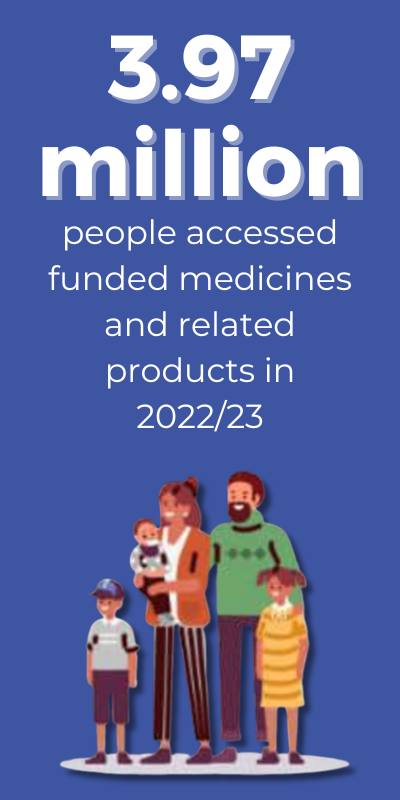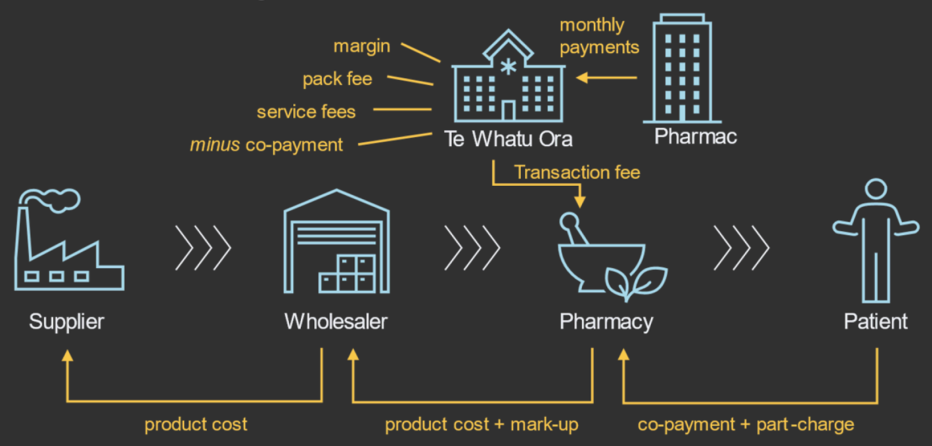Combined Pharmaceutical Budget (CPB)
The CPB is part of the government’s health budget. It’s the money set aside to pay for medicines, medical devices, vaccines and related products.

Pharmac manages the Combined Pharmaceutical Budget (CPB)
Each year, we aim to spend every dollar of the CPB on treatments New Zealanders need. We’re responsible for making sure that medicines, medical devices, vaccines, and related products remain affordable for New Zealand and New Zealanders.
The CPB is completely separate from the money used to meet the costs of running Pharmac.
What is the CPB for?
The CPB pays for the following dispensed from your community pharmacy:
- medicines
- medical devices
- vaccines (except the COVID-19 vaccine)
- other related products .
It also pays for medicines and related products given in hospitals. It does not include medical devices used in hospitals.
Pharmac decides which treatments will be funded from the CPB. You can find all funded products listed in the Pharmaceutical Schedule.
The CPB does not pay for your pharmacist’s time to dispense the medicine to you and talk to you about how to use it. These service fees are funded by Te Whatu Ora.
How is the CPB set
Pharmac, like all Crown entities, takes part in the Treasury Budget bid process each year. The CPB is a standalone appropriation within Vote Health called “National Pharmaceutical Purchasing”.
Budget.govt.nz(external link) The government's hub for information about the Budget process.
How has the CPB changed over time
Does the CPB always stay within budget?
Pharmac is legally required to ensure spending from the CPB does not exceed the amount set by the Government. At the same time, we want to put every dollar in the CPB to work getting better health outcomes for New Zealanders.
Since 2022/23, we have been able to do multi-year planning for the CPB, which makes this easier to achieve.
It’s a fine balance to make sure we spend all the money we’ve been allocated, but no more.
We constantly monitor how much and which treatments get used. Before we agree to fund a new treatment, we have to know it will stay affordable into the future.
Is increasing the CPB the only way to fund more treatments?
No. In fact, the main way Pharmac funds more treatments and manages increases in costs is by driving down the prices of already funded products.
We achieve price reductions using a range of negotiation tactics and competitive procurement processes.
An increase in the CPB does not always guarantee new treatments will be funded. We have an aging and growing population, which increases the costs of already funded medicines. We include information about cost increases when we ask the Government for an increase to the CPB.
How the money flows for treatments in the community
Getting your treatments to you involves a lot of people. And you only pay a small part of the cost to collect a funded treatment from your pharmacy.
Money from CPB goes to Te Whatu Ora to pay for your treatment. Te Whatu Ora then pays your pharmacy for the product dispensed and other costs associated to dispensing your treatment.
Pharmacies buy the treatments from a wholesaler, not Pharmac. The wholesaler has purchased the treatments from a supplier. Pharmac has a contractual relationship with the supplier. Our contracts have conditions about how much a treatment will be funded and ensuring your treatment is in stock.

Learn more
Budget bid information
How much Pharmac has asked the Government for over previous years
Prioritisation
How we decide which medicines and related products to fund out of the CPB


